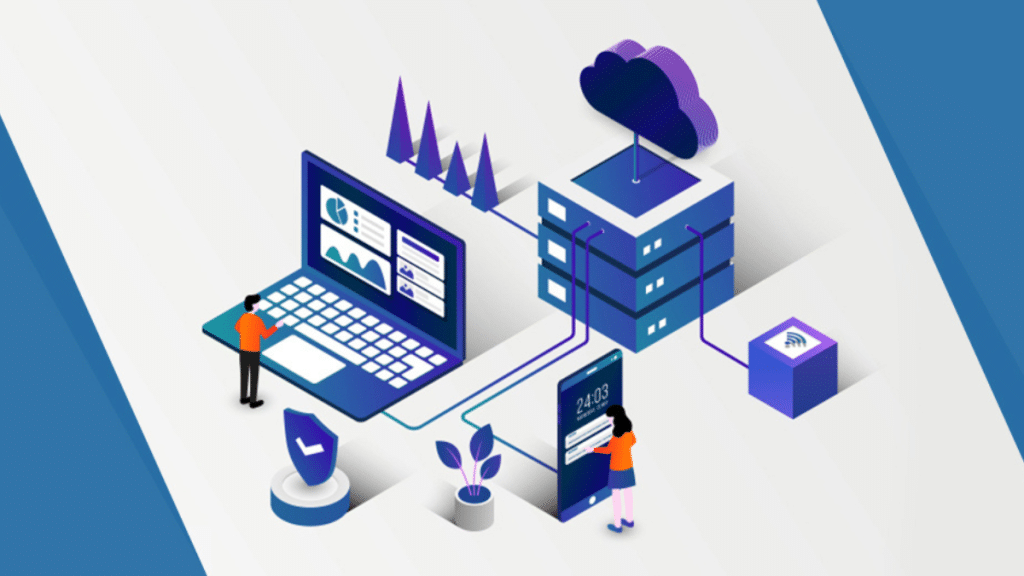As the digital landscape evolves, migrating to the cloud has shifted from a competitive advantage to a business necessity. From startups to global enterprises, companies are increasingly choosing to move their applications, infrastructure, and data to cloud environments to drive innovation, agility, and operational efficiency.
This article outlines what it means to migrate to the cloud, explores key benefits and challenges, and breaks down the main strategies for making the move successfully.
What Does It Mean to Migrate to the Cloud?
Cloud migration is the process of moving digital assets — such as applications, databases, servers, and storage — from on-premises infrastructure or one cloud environment to another (e.g., private to public cloud or from one provider to another).
This can involve:
- Moving legacy systems to a public cloud (like AWS, Azure, or GCP)
- Rehosting applications to virtual machines or containers
- Refactoring code to fit cloud-native architectures
- Migrating data to cloud-based warehouses or storage services
Why Migrate to the Cloud?
✅ 1. Cost Efficiency
Pay-as-you-go pricing models and reduced hardware dependencies allow businesses to lower capital expenditures and shift to predictable operational costs.
✅ 2. Scalability
Cloud platforms allow businesses to scale infrastructure up or down based on demand — ideal for seasonal traffic or rapid growth.
✅ 3. Flexibility and Accessibility
With cloud-based systems, teams can access data and applications from anywhere, supporting remote work, collaboration, and mobility.
✅ 4. Security and Compliance
Leading cloud providers offer enterprise-grade security, encryption, and compliance tools — often more robust than traditional IT environments.
✅ 5. Faster Innovation
Cloud services make it easier to deploy new features, test ideas, and integrate cutting-edge tools like AI, machine learning, and big data analytics.
Common Cloud Migration Strategies
The “6 Rs” of migration offer a structured approach to planning your move:
- Rehost (Lift and Shift)
Move applications as-is to the cloud with minimal changes. - Replatform
Make light optimisations without changing the core architecture. - Refactor (Re-architect)
Redesign applications to take full advantage of cloud-native features. - Retire
Decommission obsolete or redundant systems during the migration process. - Retain
Keep certain workloads on-premises temporarily or permanently if there’s no current business value in moving them. - Repurchase
Replace legacy systems with SaaS alternatives (e.g., moving from on-prem CRM to Salesforce).
Challenges of Cloud Migration
While the benefits are compelling, cloud migration comes with risks and complexities:
- Downtime and disruption
- Data security and integrity concerns
- Application compatibility
- Costs associated with poor planning
- Lack of cloud skills in-house
How to Migrate: A Step-by-Step Approach
- Assessment
Evaluate your current infrastructure, dependencies, and business goals. - Strategy
Choose the right cloud model (public, private, hybrid) and provider. - Readiness
Conduct a Cloud Migration Readiness Assessment (CMRA) to identify risks and gaps. - Planning
Define your migration roadmap, timelines, budget, and responsibilities. - Execution
Migrate in stages, starting with non-critical applications or data. - Optimisation
Monitor performance, adjust resources, and implement cost controls. - Security & Governance
Apply access controls, encryption, and compliance frameworks.
When Is the Right Time to Migrate?
- You’re facing high infrastructure or licensing costs
- Your applications can no longer scale effectively
- You need better performance, reliability, or disaster recovery
- Your development and deployment cycles are too slow
- You want to adopt modern technologies like AI or IoT
- Your team needs better access and mobility
Conclusion
Migrating to the cloud is not a one-size-fits-all initiative. It requires careful planning, cross-functional collaboration, and the right balance of speed and control. However, when done properly, cloud migration can unlock significant value — enabling your business to become faster, smarter, and more resilient in the face of change.
Whether you’re rehosting a single app or transforming an entire IT ecosystem, the journey to the cloud starts with a clear vision — and a smart, strategic approach.
